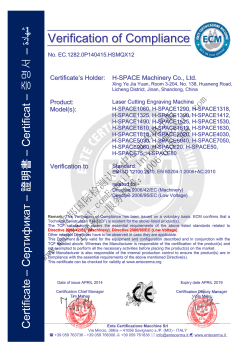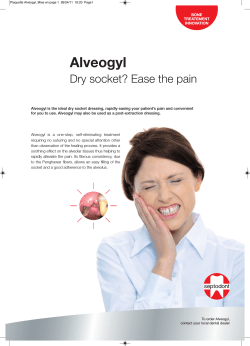
1 RATING CRITERIA AND CLASSIFICATIONS
REPORT SUMMARY Date: 3/26/2003 Page 1 of 5 In addition to this summary, this report includes the following forms: 1 2 3 4 RATING CRITERIA AND CLASSIFICATIONS PROJECT PROPERTIES AND ANALYSIS PROPERTIES SUMMARY FMEA SPREADSHEET REPORT RECOMMENDED ACTIONS (Summary Report) Xfmea Report Sample – Machinery FMEA This report was generated with ReliaSoft’s Xfmea software in Microsoft Word. Similar reports can also be generated in Microsoft Excel. You can easily replace the Xfmea logo graphic with your own company logo. Within Word and Excel, reports can be edited/annotated, if necessary, and generated in PDF and/or HTML format for easy distribution. This report includes: • A summary of the rating criteria (Severity Scale, Occurrence Scale, Detection Scale) and classifications that were used in the analysis. • A summary of the project and analysis properties that were defined for the analysis. • The Machinery FMEA (MFMEA) spreadsheet report in the SAE J1739 reporting format. • A summary list of the recommended actions identified during the analysis. The report is based on the sample analysis provided in the SAE J1739 guidelines, on page 45. Non-proprietary and non-confidential information. Document Created 3/26/2003 Generated By ReliaSoft’s Xfmea Software http://www.ReliaSoft.com RATING CRITERIA AND CLASSIFICATIONS Date: 3/26/2003 Page 2 of 5 RPN Calculation Method: Cause RPN = Severity x Occurrence x Detection Mode RPN = Sum of Cause RPNs Severity Rating Scale Item RPN = Sum of Mode RPNS plus Sub Item RPNs Occurrence Rating Scale # Description Criteria # Description Criteria 1 None Process parameter variability within specification limits. Adjustment or other process controls can be done during normal maintenance. 1 Failure occurs every 5 years 1 failure in 25,000 hours OR R(t) < 98%: MTBF is 50 times greater than the user's required time. 2 Very Minor Process parameter variability not within specification limits. Adjustment or other process controls need to be taken during production. No downtime and no production of defective parts 2 Failure occurs every 2 years 1 failure in 10,000 hours OR R(t) < 95%: MTBF is 20 times greater than the user's required time. 3 Minor Downtime of up to 10 min but no production of defective parts. 3 Failure occurs every year 4 Very Low Downtime of b/w 10 and 30 min but no production of defective parts. 4 5 Low 6 Moderate 7 High Downtime of between 30 min and 1 hr or the production of defective parts for up to 1 hr. Downtime of between 1 and 4 hrs or the production of defective parts for between 1 and 2 hrs. Downtime of between 4 and 8 hrs or the production of defective parts for between 2 and 4 hrs. Downtime of more than 8 hrs or the production of defective parts for more than 4 hrs. High severity ranking -- Affects operator, plan or maintenance personnel, 9 Hazardous - With Warning safety, and/or affects non-compliance with govt. regulations w/ warning. Very high severity ranking -- Affects operator, plan or maintenance 10 Hazardous - Without Warning personnel, safety, and/or affects non-compliance with govt. regulations w/o warning. 8 Very High Detection Rating Scale # Description 1 Very High 2 Very High 3 High 4 High 5 Medium 5 6 1 failure in 5,000 hours OR R(t) < 90%: MTBF is 10 times greater than the user's required time. 1 failure in 2,500 hours OR R(t) < 85%: MTBF is 6 times greater Failure occurs every 6 months than the user's required time. 1 failure in 1,000 hours OR R(t) < 78%: MTBF is 4 times greater Failure occurs every 3 months than the user's required time. 1 failure in 350 hours OR R(t) < 60%: MTBF is 2 times greater Failure occurs every month than the user's required time. 7 Failure occurs every week 8 Failure occurs every day 9 Failure occurs every shift 10 Failure occurs every hour 1 failure in 80 hours OR R(t) < 37%: MTBF is equal to the user's required time. 1 failure in 24 hours OR R(t) < 20%: MTBF is about 60% of the user's required time. 1 failure in 8 hours OR R(t) < 5%: MTBF is about 30% of the user's required time. 1 failure in 1 hour OR R(t) < 1%: MTBF is about 10% of the user's required time. Classification Options Criteria Abbreviation Design controls almost certainly detect a potential cause and subsequent C failure mode, machinery control not required. KI Design controls may detect a potential cause & subsequent failure mode. KLd Machinery controls will prevent an imminent failure & isolate the cause. KLg Design controls may detect a potential cause and subsequent failure mode. Machinery controls will provide an indicator of imminent failure. Description Critical Key Intermediate Key Leading Key Lagging S Significant 6 Medium 7 Low Design or Machinery controls do not prevent the failure from occurring. Machinery controls will isolate the cause and subsequent failure mode after the failure has occurred. 8 Low 9 Very Low 10 Very Low Design or Machinery controls cannot detect a potential cause and subsequent failure, or there are no design or machinery controls. Non-proprietary and non-confidential information. Document Created 3/26/2003 Generated By ReliaSoft’s Xfmea Software http://www.ReliaSoft.com PROJECT PROPERTIES AND ANALYSIS PROPERTIES Date: 3/26/2003 Page 3 of 5 Project Properties Project Name Based on Profile Machinery FMEA J1739 MFMEA Project Description This sample project was prepared based on the Machinery FMEA (MFMEA) on page 45 of the SAE J1739 guidelines. Remarks Analysis Properties ITEM 2 - Vacuum Pump FMEA Number Prepared By MF112 John Doe Product Design Responsibility Freebrakes (supplier) Key Date FMEA Date (Orig.) 5/2/2003 2/2/2003 Model Year(s)/Program(s) 199X/AllStar Release Date Core Team Mike Brake, John Doe, Jim Dominion (supplier) FMEA Date (Rev.) Primary Approval Approval Date 4/15/2003 Mission Others Affected Non-proprietary and non-confidential information. Document Created 3/26/2003 Generated By ReliaSoft’s Xfmea Software http://www.ReliaSoft.com POTENTIAL FAILURE MODE AND EFFECTS ANALYSIS Machinery/System 1 - Brake System Evac & Fill Vacuum Pump Subsystem Component Design Responsibility Freebrakes (supplier) Model Year(s)/Program(s) 199X/AllStar Key Date 5/2/2003 Core Team Mike Brake, John Doe, Jim Dominion (supplier) FMEA Number MF112 Page 4 of 5 Prepared By John Doe FMEA Date (Orig.) 2/2/2003 (Rev) 4/15/2003 Action Results Subsystem 120 Investigate longer life cables, hoses and jumpers. (Reduces occurrence) RPN 5 Actions Taken Det Robot dressing practices. Recommended jumper and cable lengths. Preventive maintenance. Water Savers Machinery Controls stop the process. - Prevention Responsibility & Target Completion Date Occ 6 Recommended Action(s) Sev Flexing, rubbing of cables, jumpers and hoses with each other during welding. RPN Current Design/Machinery Controls Detec Potential Cause(s)/Mechanism(s) of Failure Occur Class Potential Effect(s) of Failure Sev Potential Failure Mode Selected cables and hoses with longer life than originally specified. 3 4 4 48 Function Req'ts 2 - Vacuum Pump VACUUM PUMP: Provides vacuum to evacuate brake system. Achieve X millimeters in Y seconds at the furthest wheel from the vacuum source. Partial or complete loss of Moderate downtime in air, water, and power supply replacing the dressing. to the weld gun. Downtime varies from 1030 minutes for replacement. 4 Jim Manufacturing, Mike Cable, Supplier - 3/28/2003 Investigate use of abrasion Joe Dressing Supplier resistant protective - 3/10/2003 covering for cables and hoses. (Reduces occurrence) Abrasion resistant sleeves to be used at points that are subject to high wear and tear. Split cabling for water hoses/cables to minimize length of replacement. (Reduces downtime/effects severity) Joe Dressing Supplier - 3/10/2003 Completed. Utilize infrared thermography to predict robot dressing failure. (Improves detection) Joe Dressing Assembly Plant 123 - 3/12/2003 Infrared Thermography incorporated into predictive maintenance plans. Non-proprietary and non-confidential information. Document Created 3/26/2003 Generated By ReliaSoft’s Xfmea Software http://www.ReliaSoft.com RECOMMENDED ACTIONS (Summary Report) # Recommended Action(s) Target Completion Date Responsibility Date: 3/26/2003 Page 5 of 5 Actions Taken Subsystem Potential Cause(s)/Mechanism(s) of Failure 5 Investigate longer life cables, hoses and jumpers. (Reduces occurrence) 3/28/2003 Jim Manufacturing, Mike Cable, Supplier Selected cables and hoses with longer life than originally specified. Vacuum Pump Flexing, rubbing of cables, jumpers and hoses with each other during welding. 6 Investigate use of abrasion resistant protective covering for cables and hoses. (Reduces occurrence) 3/10/2003 Joe Dressing Supplier Abrasion resistant sleeves to be used at points that are subject to high wear and tear. Vacuum Pump Flexing, rubbing of cables, jumpers and hoses with each other during welding. 7 Split cabling for water hoses/cables to minimize length of replacement. (Reduces downtime/effects severity) 3/10/2003 Joe Dressing Supplier Completed. Vacuum Pump Flexing, rubbing of cables, jumpers and hoses with each other during welding. 8 Utilize infrared thermography to predict robot dressing failure. (Improves detection) 3/12/2003 Joe Dressing Assembly Plant 123 Infrared Thermography incorporated into predictive maintenance plans. Vacuum Pump Flexing, rubbing of cables, jumpers and hoses with each other during welding. Priority Non-proprietary and non-confidential information. Document Created 3/26/2003 Generated By ReliaSoft’s Xfmea Software http://www.ReliaSoft.com
© Copyright 2025












